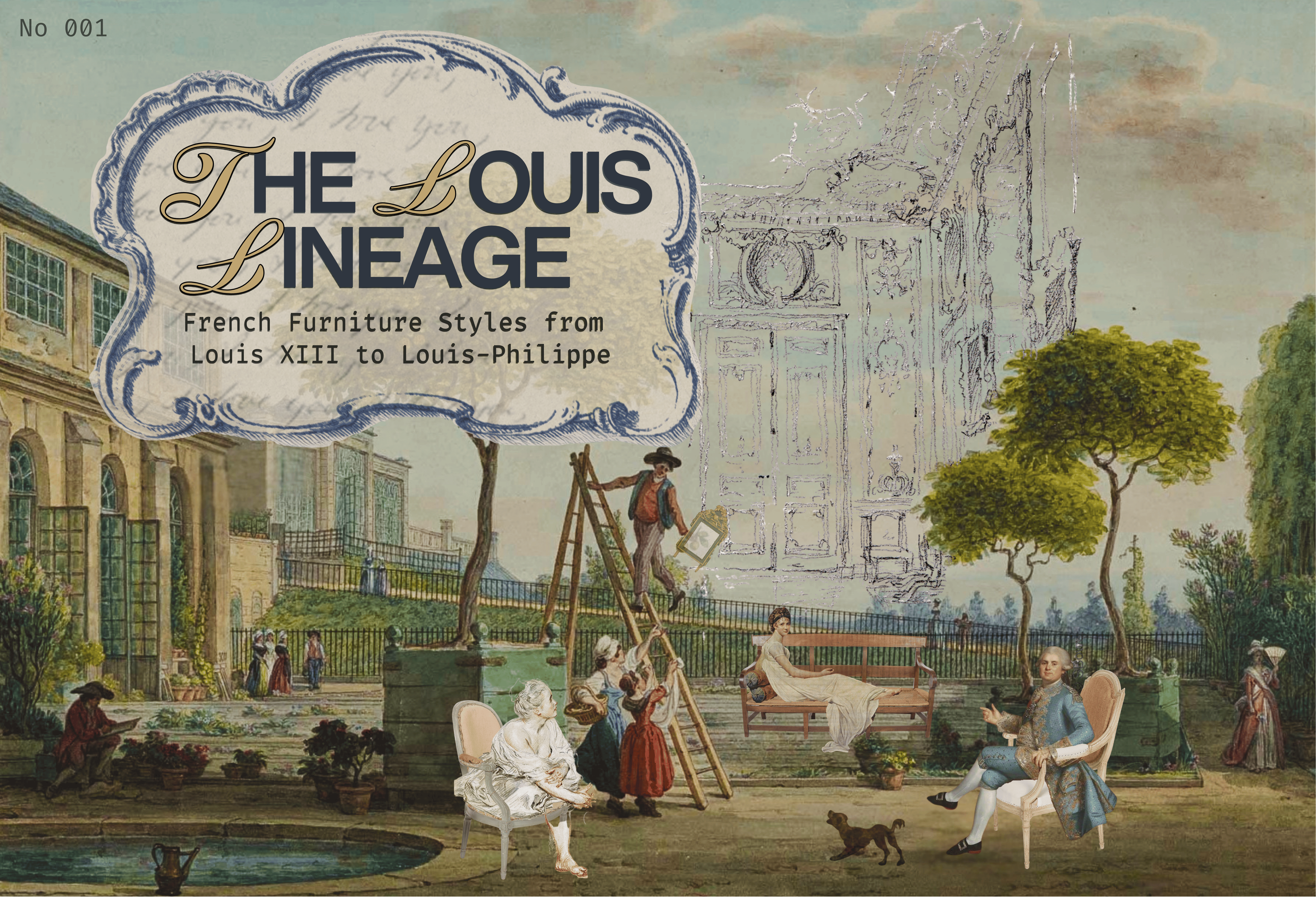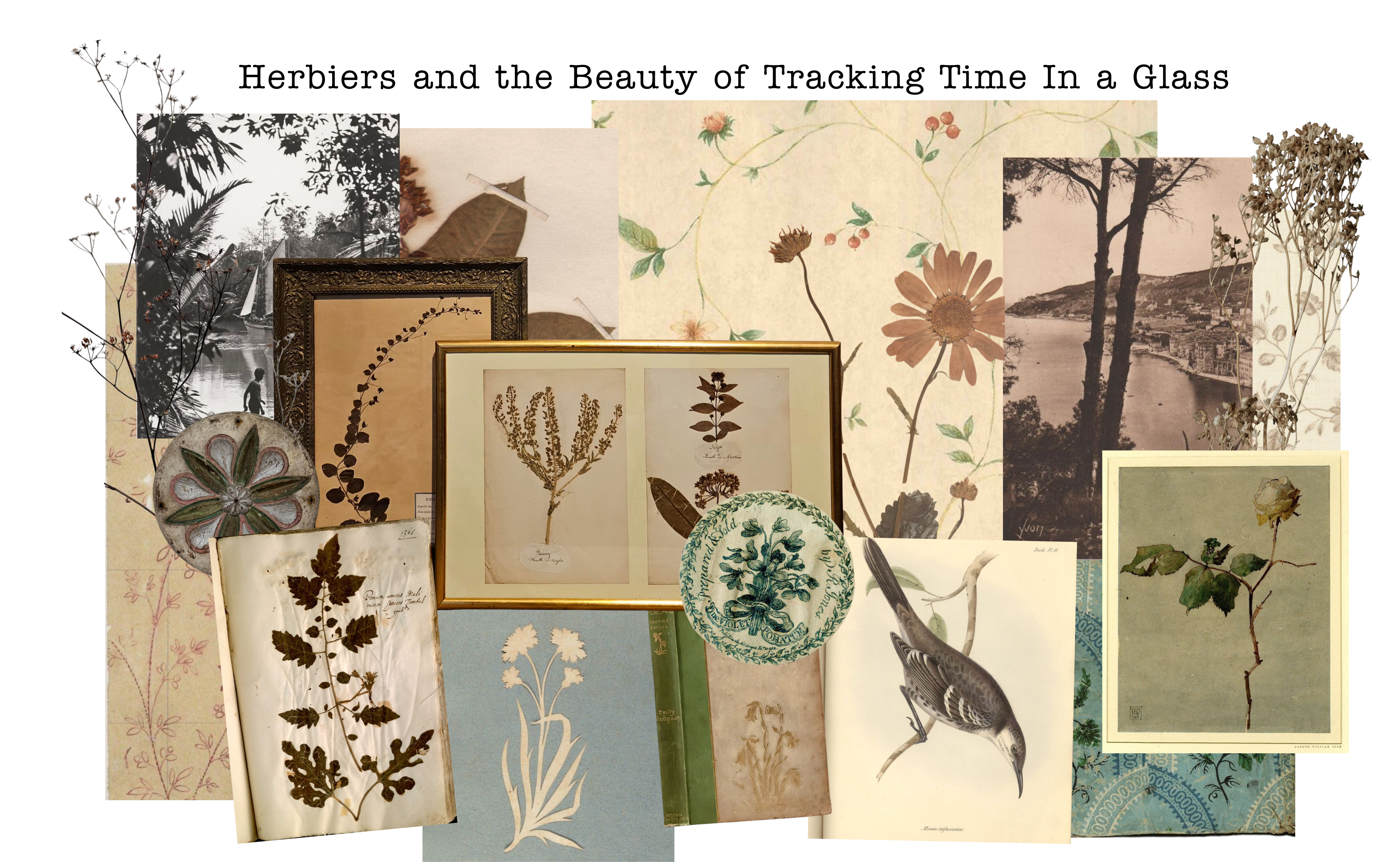Article: The Louis Lineage: French Furniture Styles from Louis XIII to Louis-Philippe

The Louis Lineage: French Furniture Styles from Louis XIII to Louis-Philippe
Written by Jason Davis
Edited and curated by Shayla Torres
The Nicholson Gallery
Step inside The Louis Lineage, where history meets the art of living beautifully. At The Nicholson Gallery, we believe every piece of furniture tells a story, and few stories are as captivating as those written by the French kings. From the grounded strength of Louis XIII to the approachable elegance of Louis-Philippe, these styles trace a journey from royal power to refined comfort.
What makes Louis-era furniture so enduring is its ability to merge craftsmanship with meaning. Each reign reflected not only a ruler’s taste but the ideals of an entire society: authority under Louis XIII, divine grandeur under Louis XIV, intimacy and individuality under Louis XV, and reasoned harmony under Louis XVI. These designs became the blueprint for elegance across Europe, admired for their balance, artistry, and human touch. Even centuries later, their silhouettes feel timeless and their craftsmanship unmatched.
Unlike the heavier and more regional styles of other European courts, French design during the Louis eras achieved a distinctive blend of refinement and innovation. Artisans such as André-Charles Boulle and Jean-Henri Riesener worked under royal patronage but infused their creations with individuality and vision. Their works are remembered alongside their royal patrons because each king’s court defined the spirit of its time. The “Louis” names endure not as erasures of the maker but as symbols of an age when art, politics, and power were inseparable. Each curve, carving, and flourish reveals not only changing tastes but the spirit of the age itself and the timeless charm that continues to inspire interiors today.
Louis XIII (1610–1643): Strength in Structure

In early 17th-century France, the monarchy was still finding its footing after years of civil conflict and religious wars. When young Louis XIII inherited the throne, he wanted his interiors to feel strong and grounded. The nation sought stability and that need for order was reflected in its furniture.
Pieces from this period were solid and serious, made from heavy oak and walnut in deep, rich tones. Italian and Spanish influences were present, but French craftsmanship emphasized structure over decoration. Large, square armchairs with high backs became a favorite, giving rooms a sense of permanence and authority. Stretchers connected the chair legs in study X or H shapes, and the legs themselves were turned like columns. A miniature reflection of the architecture.
Cabinets and commodes featured paneled doors and carved moldings that echoed architectural lines, while early enfilades anchored great halls with their geometric symmetry. Mirrors were rare and treasured, their small Venetian glass panels framed in giltwood, and simple pottery and faience pieces added subtle color and life to otherwise solemn interiors.
This architectural discipline mirrored the monarchy itself. Under Cardinal Richelieu, furniture became an expression of order, symmetrical, weighty, and composed. Carved details hinted at strength rather than opulence, and every piece felt like a statement of confidence, a reminder of the monarchy’s endurance.
Louis XIV (1643–1715): All That Glitters Is Glory

If Louis XIII valued strength, his son Louis XIV valued splendor. Known as the “Sun King,” he saw design as a reflection of divine power and used the arts to project his reign’s authority. His furniture and interiors became instruments for politics, crafted to display his dominance and the discipline of his rule.
Master craftsmen like Andre-Charles Boulle elevated marquetry and gilt bronze, setting a benchmark for artistry that would define luxury for centuries. Furniture under Louis XIV sparkled with gold, marble, and velvet. Gilded carvings and mythological motifs transformed even the simplest pieces into works of art. The Palace of Versailles became a stage where every mirror, chandelier, and table shone in the royal spotlight. It’s said Versailles used enough gold leaf to cover 100 football fields, a glittering example of this era’s love of luxury.
Though centuries have passed, the influence of Louis XIV endures not through reverence but through material presence. His reign intertwined beauty and control, creating an aesthetic that valued symmetry, craftsmanship, and permanence. That language still lives within the Nicholson Gallery today, in the giltwood mirrors, marble-topped commodes, and restrained architectural forms that recall the balance of power and grace from his era. These pieces remind us that design is not simply decoration but a record of how culture once defined authority, and how it continues to evolve in the spaces we create.
Louis XV (1715–1774): The Art of Seduction

By the time Louis XV reigned, France had traded formality for intimacy. After decades of royal ceremony and grandeur at Versailles, daily life shifted inward. The nobility moved into private townhouses, and the rise of the salon culture, often led by influential women, reshaped society. Conversation, charm, and comfort replaced the grand display of state power.
The Rococo style flourished, full of curves, shells, and floral motifs that made furniture feel light and playful. Beech and walnut replaced heavier woods, and soft pastel finishes added warmth and romance. Chairs curved gently to cradle the sitter, their cabriole legs and carved aprons echoing natural forms. Commodes, often adorned with ormolu mounts and marquetry veneers, seemed to glide across the floor with elegant ease.
This was the bohemian era of French design, light, indulgent, and quietly defiant in its embrace of the feminine. It celebrated pleasure, comfort, and self-expression in a society once ruled by order and restraint. Louis XV furniture did not shout power; it whispered beauty.
That spirit still lives within The Nicholson Gallery today. In our showroom, we display pieces that celebrate craftsmanship, sensual form, and individuality. Much like the women who once led the salons, Martha continues that legacy of taste and independence, curating spaces where refinement meets personality and where beauty once again becomes a quiet act of rebellion.
Louis XVI (1774–1793): Return to Reason

As Enlightenment ideas spread across Europe, design became more thoughtful and structured. Inspired by the archaeological discoveries of Pompeii and Herculaneum, furniture makers began looking back to the clean geometry of classical Greece and Rome. This shift marked more than a change in style; it reflected a society turning toward logic, balance, and ideals of order after the indulgence of Rococo - a reminder that design, like history, often circles back to its roots.
Playful Rococo curves gave way to straight lines, symmetry, and refined proportions. Chairs and tables featured fluted legs, laurel wreaths, and urns, often painted in pale shades that felt calm and balanced. The palette softened from the warmth of walnut and gilt to tranquil tones of cream, sage, and celadon, echoing the intellectual coolness of the age.
This was a moment of transformation, a dialogue between two worlds. Where Rococo expressed pleasure and movement, Louis XVI brought focus and clarity. The exuberance of one era matured into the discipline of another, showing how design can embody the values of its time.
Beneath this harmony, however, France was a kingdom on edge. Enlightenment ideals of reason and equality were reshaping thought even as the monarchy struggled under debt and unrest. The clarity and symmetry of Louis XVI design became a visual expression of control, an attempt to restore order in a world inching toward revolution.
Louis XVI furniture reflected a new philosophy: elegance rooted in reason. That same pursuit of balance endures in The Nicholson Gallery’s collection today in the refined lines and quiet symmetry of our neoclassical pieces. These works remind us that beauty often begins with order.
Directoire (1795–1799): The Revolution’s Style

After the Revolution, French design shifted dramatically. The extravagance of the monarchy was out, and simplicity was in. Interiors once gilded in ornament were pared back, quieter and more deliberate, reflecting a society recovering from upheaval. The salons of Paris grew smaller and more intimate, as people adjusted to a new rhythm of life where excess felt inappropriate, even tone-deaf, after years of unrest.
Directoire furniture was lean and geometric, often made from mahogany with brass accents. White-painted finishes, known as peinture en blanc created a fresh, modern look for a country rebuilding its identity. Decoration became subtle but symbolic, with revolutionary motifs like liberty caps and bundles of rods representing unity. Rooms were sparsely furnished but full of intention. Sunlight fell across white painted walls, catching on the faint gleam of brass and the sheen polished wood. Everyday life took on a sense of measured calm. Fewer ornaments, simpler meals, quieter conversations.
It was an era of transition that balanced refinement with restraint, where design became a visual language for a nation rebuilding itself through clarity and grace.
Empire (1804–1815): Napoleon’s Glory

Enter Napoleon, and suddenly furniture became bold again. The Empire style drew inspiration from ancient Rome and Egypt, creating interiors that felt powerful and majestic. Massive mahogany pieces were paired with gleaming gilt bronze. Eagles, sphinxes, lions, and laurel wreaths decorated everything from desks to headboards. The look was grand and commanding, meant to celebrate victory and strength.
Yet beneath this grandeur was something more complex. Ambition and ego. As Napoleon’s empire expanded, art and artifacts from across Europe were seized and repurposed to reinforce his vision of dominance. Classical motifs were stripped of their ancient symbolism and recast as emblems of control. The symmetry, balance, and gilded ornament of the Empire style weren’t merely aesthetic choices; they were statements of authority.
In these rooms, the line between beauty and propaganda blurred. The glow of polished bronze and weight of carved mahogany reminded visitors that design could be both magnetic and manipulative. Empire furniture didn’t just fill a room; it conquered it.
The Empire style endures as both beauty and warning. A reminder that art can elevate truth or serve ambition. In its polished surfaces and gilded symbols, we glimpse the paradox of creation born from conquest. What remains is not celebration but reflection. A recognition that even the grandest designs reveal the complexities of those who shape them, and the shifting ideals of the world that follows.
Louis-Philippe (1830–1848): Elegance for Everyone

By the 1830s, France had entered a new era. The Industrial Revolution was in motion, and a growing middle class wanted pieces that were stylish but livable. Louis-Philippe furniture embraced comfort and practicality while keeping a touch of refinement. Walnut replaced gilded gold, and designs became simpler with gentle curves and a softer look.
For the first time, elegance became something everyone could own. Mass production and accessibility shifted the emotional value of furniture. From objects of prestige to symbols of personal taste and domestic life. Revival styles drew from the past, but the focus was on everyday beauty rather than royal grandeur. This was French design for real homes, where power became personal and beauty found purpose in use.
The simplicity of Louis-Philippe era quietly foreshadowed modern design, where refinement and practicality coexist. It was a reminder that grace doesn’t always come from grandeur, but from the comfort of life well-lived.
At Nicholson Gallery, the legacy of the Louis eras lives in the details. These pieces weren’t made for display but for living, built to last, to serve, to carry the weight of use and time. Whether carved from walnut or finished in gilt, they remind us that true design holds its purpose. We keep them in circulation because good work doesn’t belong to the past. It belongs to the present.
The Legacy of the Louis Lineage
From the stately oak of Louis XIII to the polished walnut of Louis-Philippe, French furniture tells a living story of craftsmanship, culture, and the ever-evolving idea of beauty. Each reign brought its own rhythm and personality, from the theatrical grandeur of Versailles to the graceful intimacy of Rococo salons. What began as symbols of royal power slowly became expressions of personal style, inviting comfort and charm into everyday life.
At The Nicholson Gallery, we see these pieces not just as antiques but as storytellers, tangible links between past and present. They remind us that true design endures not because it is grand, but because it continues to make us feel at home in history.
The Louis lineage is not simply a record of changing styles; it is a mirror of human aspiration, our pursuit of beauty, order, comfort, and identity across time. Each piece carries the same quiet question: how do we live with grace in the world we inherit? In that sense, the Louis tradition is less about monarchy than about meaning. It shows us that design, at its best, transcends its moment and invites every generation to rediscover elegance in its own way.



